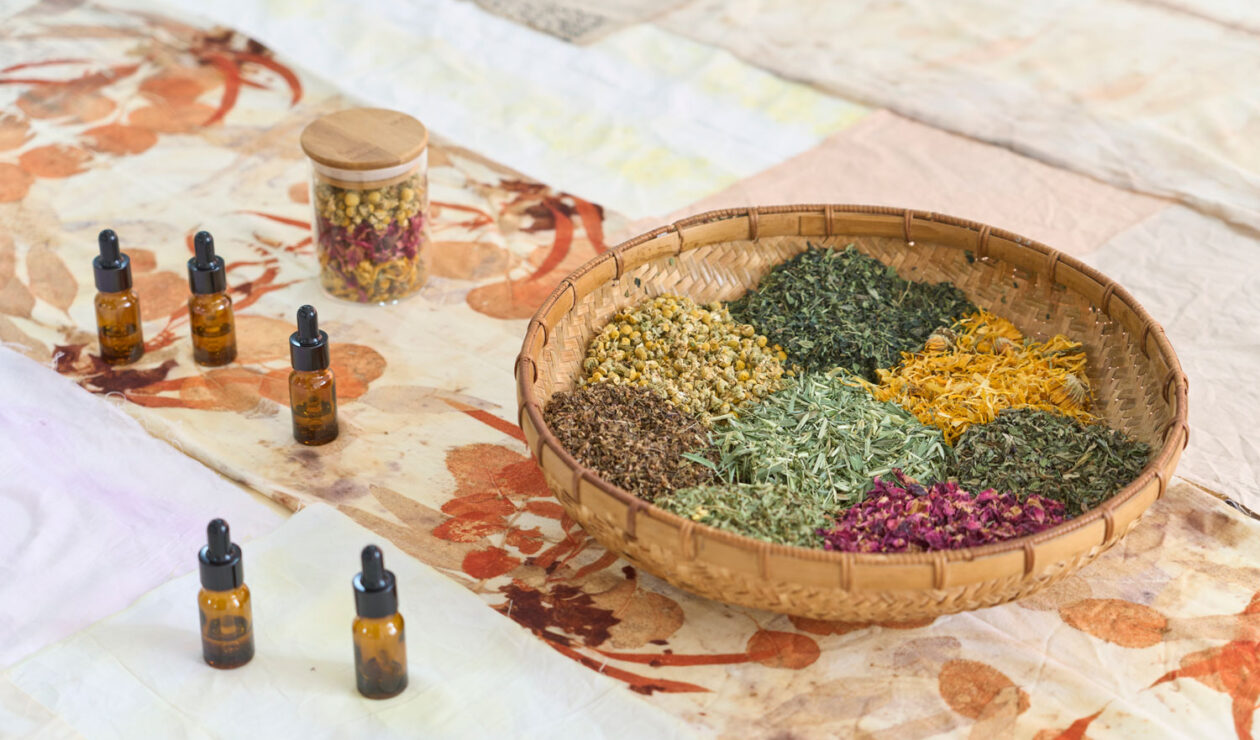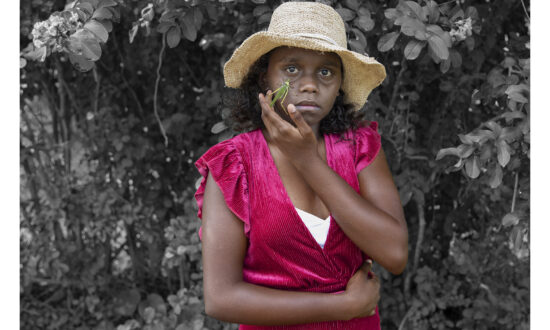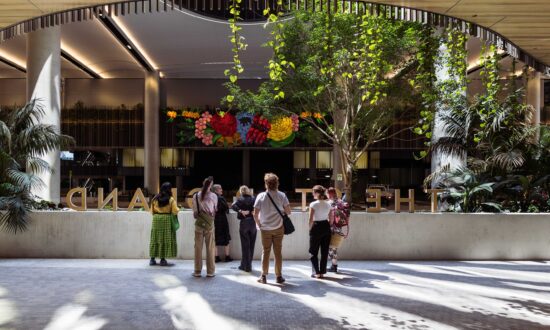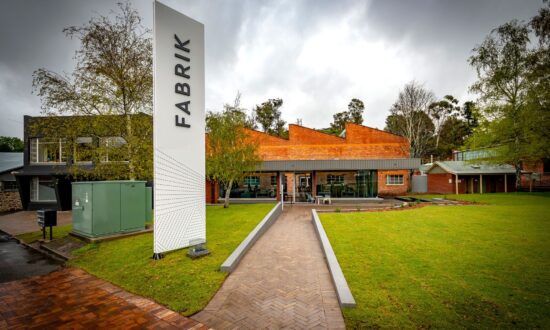Sisters of Lartelare
Adelaide Contemporary Experimental
Kaurna Women’s Art Collective’s new multi-sensory display Sisters of Lartelare at Adelaide Contemporary Experimental aims to open up new understandings of Kaurna history, stories, and culture connected to Yartapuulti (Port Adelaide). It is a radical investment in a group of women understanding themselves and understanding collectivism – but raises questions about the nature and status of the art object, and how we define contemporary art.
A space that has in recent years been used as a reception area and a place for performances and discussions is re/activated with great effect for this exhibition. Flat display walls and a large, round, suspended platform have been created and painted with a bone colour to cleverly connect the disjointed surfaces for the display of art.
On display is a series of objects produced by the collective in the lead-up to the exhibition.
The women made textiles and created scents during a series of plant-based natural dyeing, medicinal plant and fragrance-distillation workshops at ACE. The works consist of various stained, dyed, printed and scented material components. They read as beautifully arranged, aesthetically considered documentation. Of note is the arrangement of native branches – eucalypts, wattle, saltbush – trading on natural beauty and formalism, while operating as an intergenerational archive of the project.
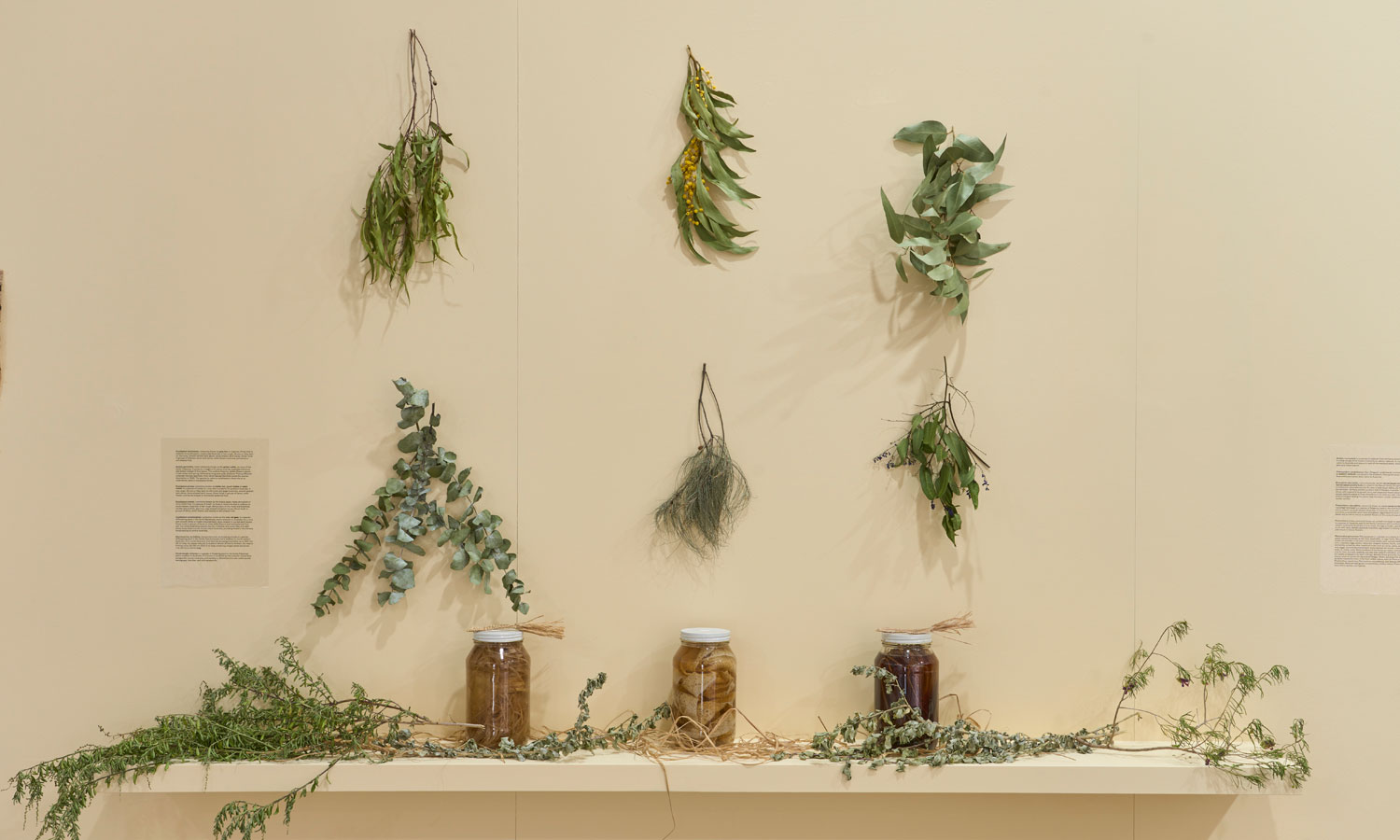
An arrangement of native branches in the Sisters of Lartelare exhibition. Photo: Sam Roberts
Given that the Kaurna Women’s Collective is a dynamic ensemble drawn from multiple generations consisting of semi-professional and non-career artists, it may be a struggle for some folk to appreciate why such a collective and their work may be suitable for a flagship independent arts organisation that primarily fosters artist careers and ideas. Situating a practice grounded in tradition within a contemporary indoor art institution can certainly be regarded as experimental. Is Sisters of Lartelare “art”? Does it matter?
In this time and place, notions and experiences of indigeneity are diverse – it is in our blood, all of us, no matter where we live, who we love, how we do life. First Nations peoples in Australia do not and should not have to “perform” their “nativeness” – for anyone. They should not have to live on Country to be authentically themselves, to be authentically Indigenous peoples.
This is not to say that connections to Country, and to each other, are not important. Connectivity is crucial in regard to honouring history, song-lines, and the recovery and sustainability of culture that has in many instances been decimated by the impacts of colonisation. This project asserts existing connections, while forging new ones, across generations of Kaurna women and their Country, Yartapuulti (Port Adelaide).
Sisters of Lartelare explores literally underneath the layers of Yartapuulti – Country that colonial incursion razed, covered in concrete, invaded with non-provenance plant-life, and choked with refuse and toxic pollutants. The project highlights how Country in Australia is layered in history and culture, concrete-coated or not. I am thinking of recent “community consultation” debates on the push for a continuous coastal bike-path fantasy, where concerns of coastal protection were quashed with an argument that coastal Country couldn’t be regarded as having “heritage” because the sand (due to natural shifts and being replenished by truck) wasn’t necessarily “original” – paving the way (quite literally) for further concreting and non-native plantings.
In the Kaurna women’s excavations, in the sharing of culture and the building of community, they reveal possibilities for the proper revitalisation of space, memory and culture – while asserting the importance of listening.
Maintaining and restoring culture on Country will also better ensure a long-lasting natural resource for all of society. Considering the urgency of this task, and the role of institutions to support it, is it not only entirely appropriate to explore new ways of understanding and reconnecting through the senses – including visual, aural, scent and tactility – but also necessary?

Get InReview in your inbox – free each Saturday. Local arts and culture – covered.
Thanks for signing up to the InReview newsletter.
Now led by emerging Kaurna Leader Bonny Brodie, with guidance from Aunty Margaret Brodie, the Kaurna Women’s Art Collective currently consists of Tash Sutcliffe, Shakira Bilney, Hannah Rankine, Melissa Ballangarry, Bowjay Austin, Abbie Scarce.
Sisters of Lartelare, presented with project partner Vitalstatistix, is at Adelaide Contemporary Experimental until October 19.
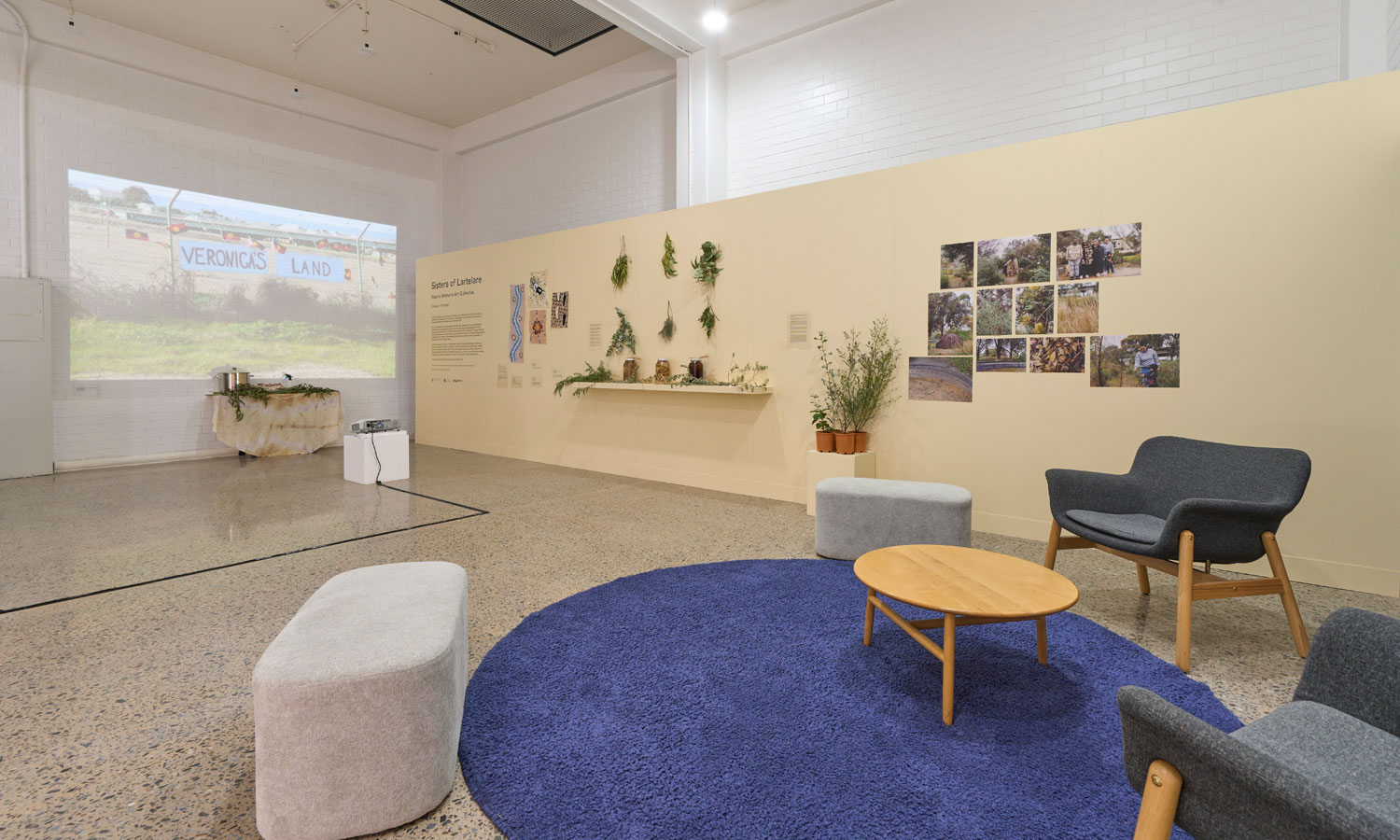
The exhibition space has been activated to great effect for the Sisters of Lartelare exhibition. Photo: Sam Roberts
Support local arts journalism
Your support will help us continue the important work of InReview in publishing free professional journalism that celebrates, interrogates and amplifies arts and culture in South Australia.
Donate Here
